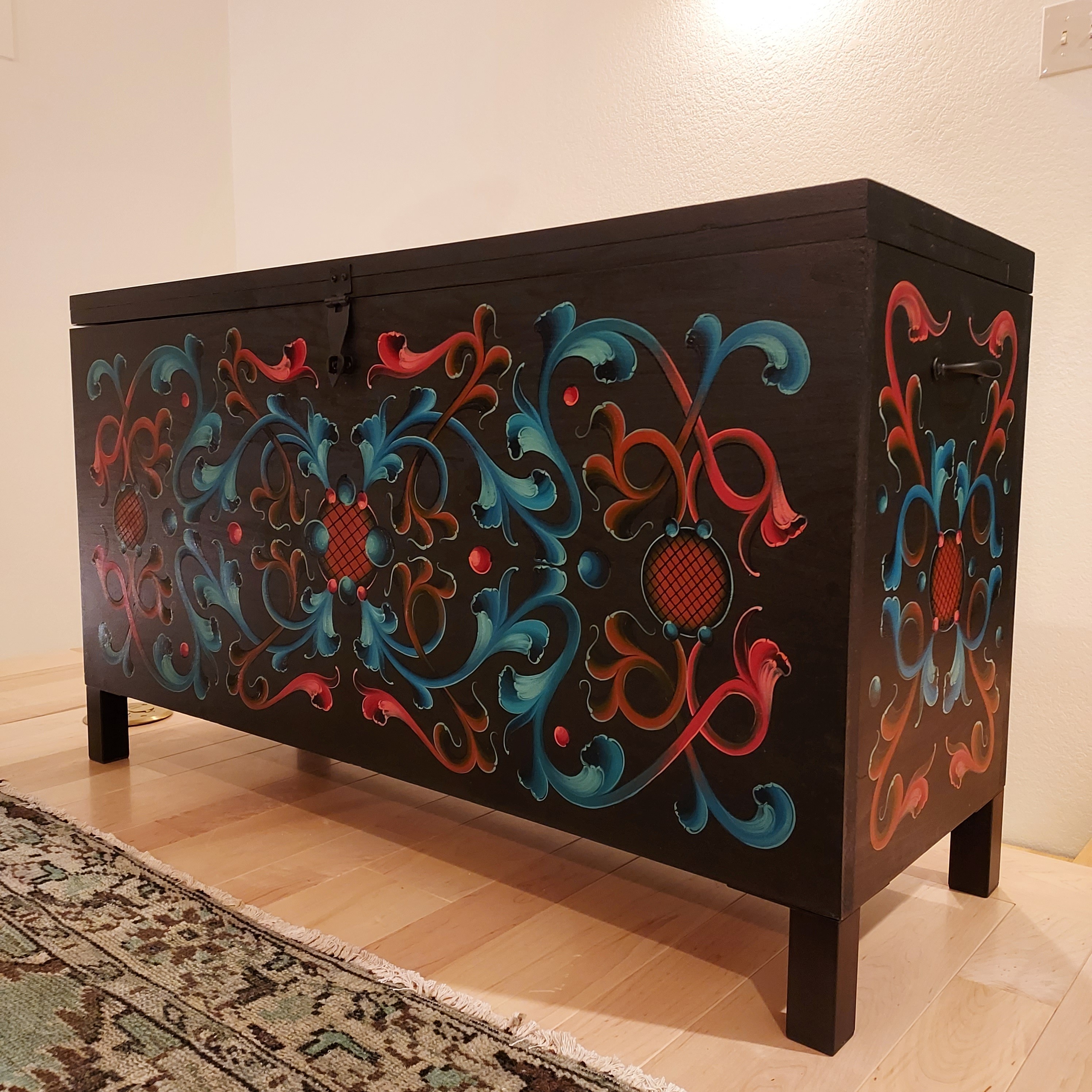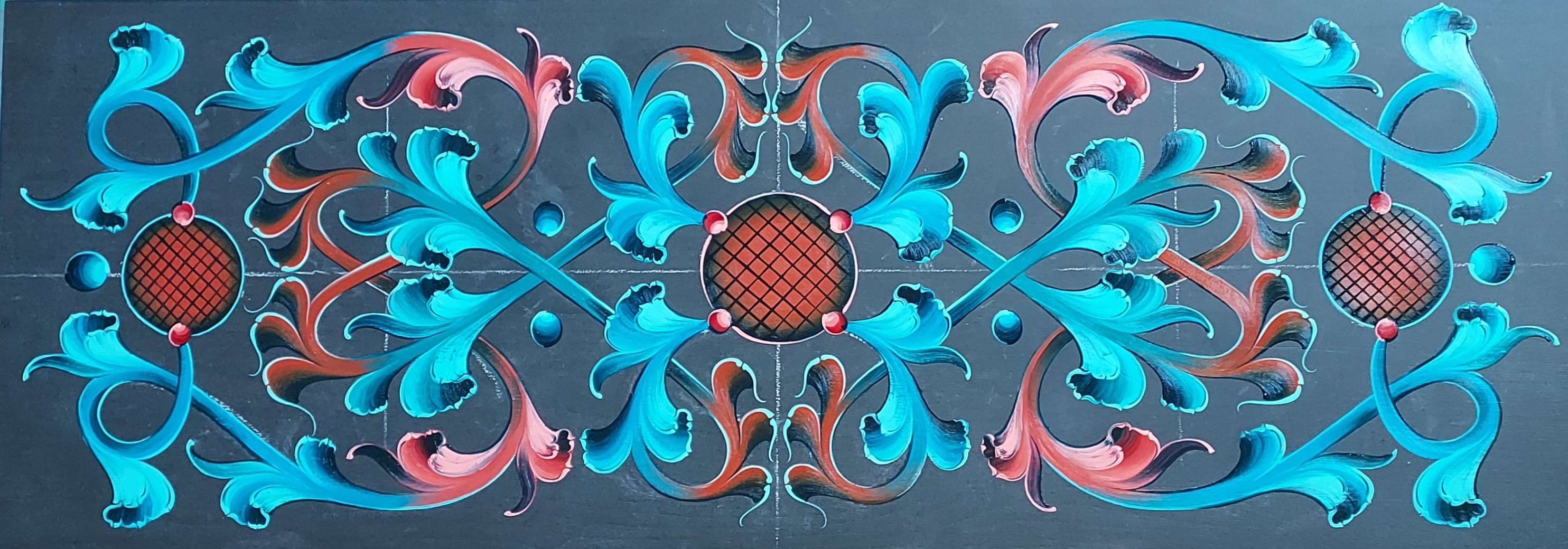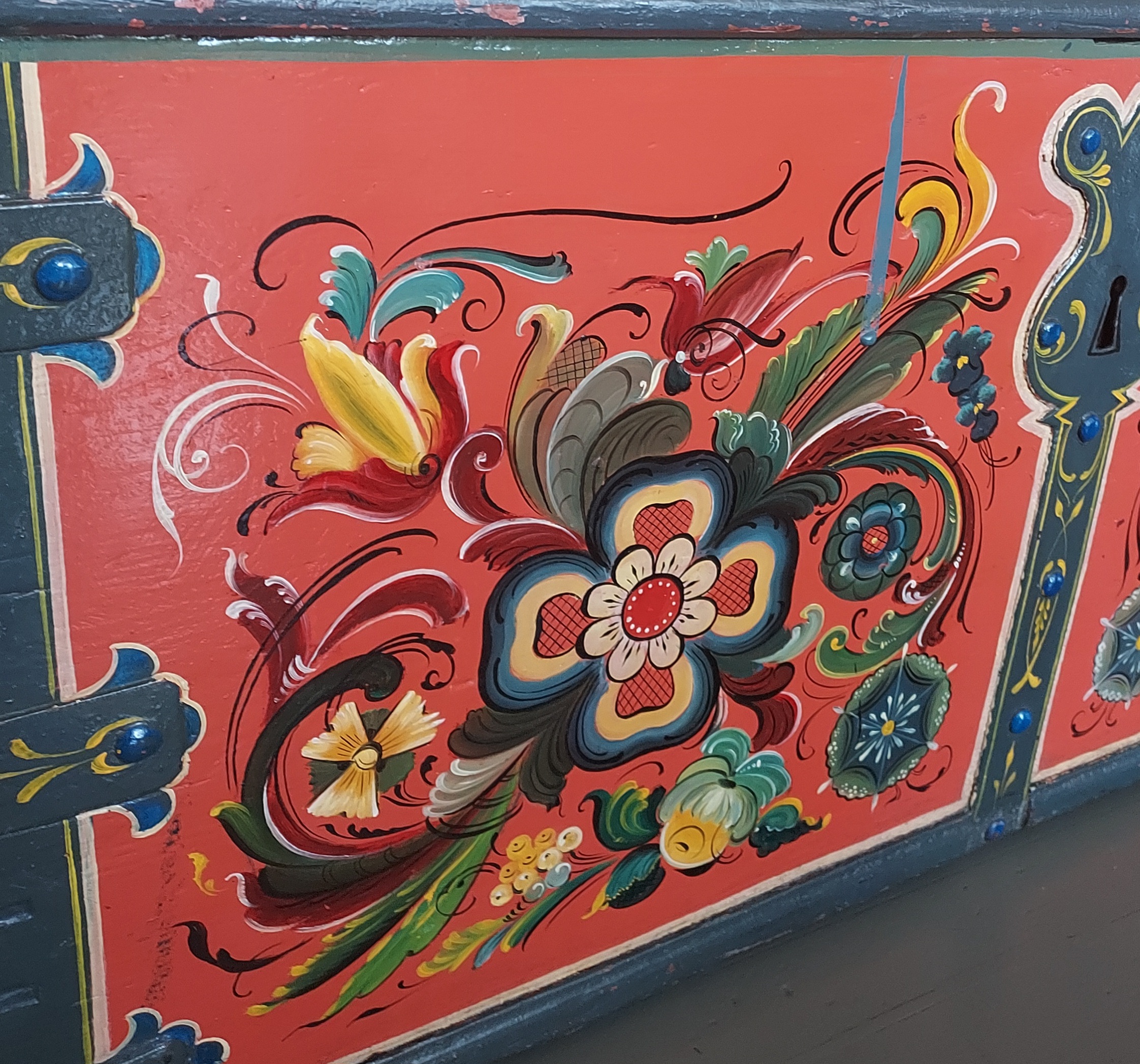
Rosemaling Patterns on Trunks

Rosemaling is more than mere decoration; its patterns can convey a sense of belonging and love for community. In her newest blog post, Tara Austin writes about participating in the historic tradition of rosemaling trunks.
So much of rosemaling’s story is painted on trunks, and many of these trunks traveled across the ocean to America. Trunks are functional and hold precious objects; they offer protection and secure transportation. They can also be beautiful pieces of functional art for the home.
I am currently working on a series of trunks, each with its own distinctive pattern. They will all be painted black and have matching black metal hardware, but the color palette and rosemaling style will be a new exploration for each trunk. Patterns have always fascinated me, and I am thankful to have been introduced to Victorian writer Owen Jones book The Grammar of Ornament. With or without reading, Jones created a beautiful book that shows distinctions in the cultural origins of specific patterns and motifs.

To the culture bearer, these patterns evoke a sense of belonging and love for their community, using a narrative not of words but of shapes, lines, and color. I like to think that rosemalers who were painting a trunk for a loved one leaving home infused their designs with a narrative of love and safety for the journey ahead.

There are two special trunks that I was fortunate to have seen in person. They are both beautiful and unique examples of rosemaling. One is at the Utne Hotel in the fjords of Norway. The Utne Hotel is nearly 300 years old and has some great examples of rosemaling throughout the establishment. The other is a trunk at Vesterheim Museum painted by Hans Glittenberg. See Vesterheim’s fantastic virtual gallery here.